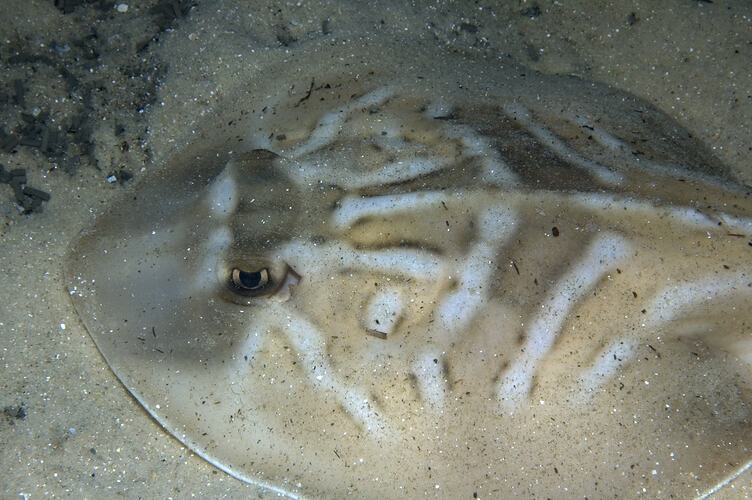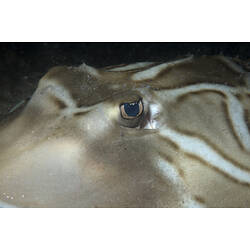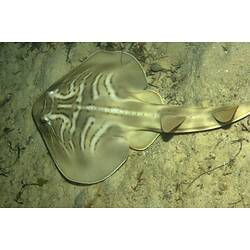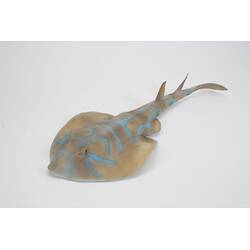General Description
Head and body flattened in front, with a curved diamond outline, and a shark-like behind, with two prominent dorsal fins of similar size and a distinct tail fin. Brown back with contrasting ornate lines and blotches centrally. Born at up to 25cm, adults usually 80 cm long head to tail tip (up to 150 cm).
Biology
This species is common in coastal waters and is often seen foraging over sand flats and seagrass beds feeding on fishes and invertebrates. Females give birth to up to six live young which develop inside their mother in eggs and hatch before birth. Birth is usually in the autumn after a gestation of 12 months. Southern Fiddler Rays are taken as bycatch in commercial trawls and sold in small quantities. Intermediate in appearance between sharks and rays, these are primitive rays as their gill slits are positioned on the underside of their disk like head. Their tropical relatives are even more shark-like in having better defined pectoral fins. Trygonorrhina dumerilii is easily confused with Trygonorrhina fasciata which is very similar in appearance but occurs only along the east coast.
Distribution
Southern Australia.
Habitat
Coastal waters including over sand flats and seagrass beds, in depths to 120 m.
More Information
-
Animal Type
-
Animal SubType
-
Brief Id
Pale brown with dark brown markings, diamond shape body, two dorsal fins on tail.
-
Maximum Size
150 cm
-
Habitats
-
Diet
Carnivore
-
Diet Categories
Crustaceans, Worms, Fish, Molluscs
-
Endemicity
-
Commercial
No
-
Conservation Statuses
CITES: Not listed, FFG Threatened List: Not listed, DSE Advisory List: Not listed, IUCN Red List: Least Concern
-
Depths
Deep ( > 30 m)
-
Water Column Locations
On or near seafloor
-
Taxon Name
-
Scientific Author
Castelnau, 1873
-
Common Name
Southern Fiddler Ray
-
Kingdom
-
Phylum
-
Subphylum
-
Superclass
-
Class
-
Subclass
-
Superorder
-
Order
-
Family
-
Genus
-
Species Name
dumerilii




